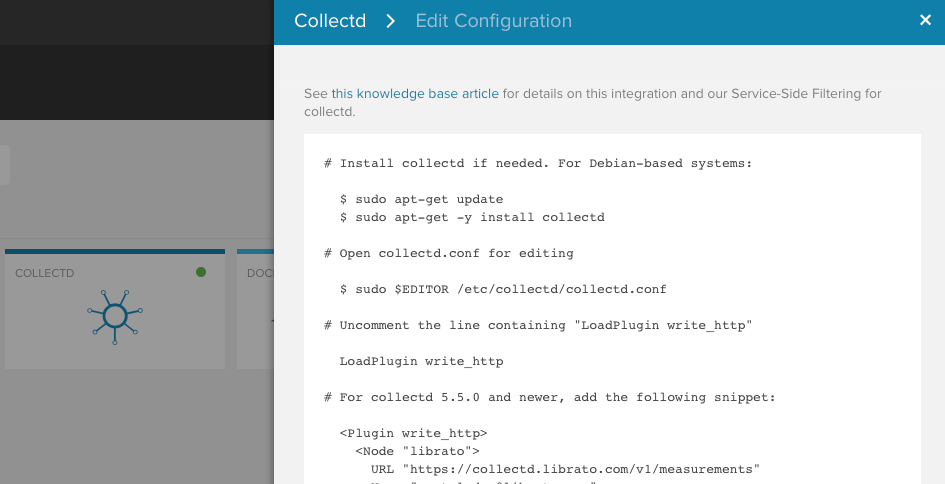Collectd¶
Librato provides support for server monitoring through a native integration with collectd. This capability makes it trivial to get system metrics like CPU, Load, Disk and Network I/O for all your hosts into Librato with a pre-configured dashboard. You can be up and running in minutes!
Why collectd? Collectd is one of the most popular and widely deployed OSS system monitoring agents. It is used for everything from basic statistics gathering, to performance analysis and capacity planning. Written in C, it is fast, lightweight, and included by default in most Linux distributions. With over 90 plugins, it is also quite flexible. Our new integration includes dashboards that work out of the box with no manual setup. Behind the scenes, data is sent directly from the collectd daemon using the stock Write_HTTP plugin already included with most distributions.
Note: the collectd integration supports versions >= 4.10.0 at the moment .
Setup¶
Activate the integration either via the welcome screen when you first sign up or by accessing the integrations page.

Service Side Filtering¶
You can select service-side which metrics you want to enable. Select your metrics and save.

You will then need to configure your collectd configurations. Follow the instructions provided by clicking on the name of a collecd integration.

To enable any other collectd plugins add them as a comma-separated list
to the Other Plugins box. The white-list supports wildcard matching, for
example collectd.swap.* or collectd.mysql.* . A single wildcard
* will import all plugins.
Visit your space to observe the new metrics. You can use the search field at the top to narrow down the sources used in the graphs. For example, you may want to isolate a specific tier of web servers or even an individual machine that is behaving badly.

As long time fans of collectd, we have provided support in the past with a python plugin, a chef recipe and more. The native integration works in a similar way, has fewer dependencies, is easier to install and works out of the box with most collectd installations. If you have a previous installation using one of these methods, it will continue to work without changes.
For specific answers to collectd questions check out our collectd FAQ.
Let us know what you think when you take this for a spin. We would love to incorporate your feedback and any new dashboards you design into the ongoing development of this key server monitoring technology.

